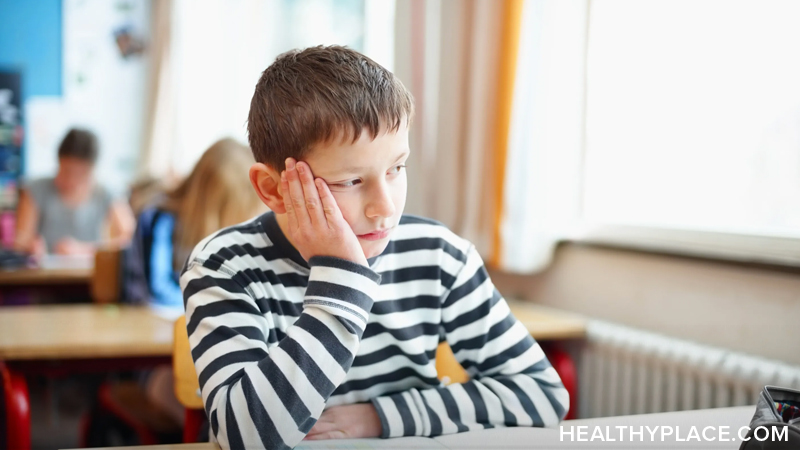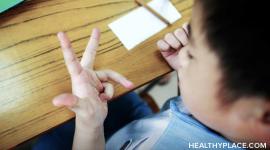What Is a Learning Disability? Definition of Learning Disability

A learning disability is a processing problem within the brain that has nothing to do with intelligence. Kids who have learning disabilities have average or above average intelligence. The difference between a child with a learning disability and a child without one is only that their brains process some information differently. Let’s look at the definition of learning disability and what learning disabilities are like.
Definition of Learning Disabilities
Simply put, learning disabilities involve problems with the academic skills involved in reading, writing, or math. The Individuals with Disabilities Education Act (IDEA), the federal law in the US that mandates and protects special education services, officially states what a learning disability is:
“…a disorder in one or more of the basic psychological processes involved in
understanding or in using language, spoken or written, that may manifest itself
in an imperfect ability to listen, think, speak, read, write, spell, or do
mathematical calculations, including conditions such as perceptual disabilities,
brain injury, minimal brain dysfunction, dyslexia, and developmental aphasia.”
“Learning disability” is a general term that indicates that someone has a very specific type of learning problem. They are brain-based—the brain experiences processing problems in a particular area, which negatively affects basic language or math skills.
Sometimes, people use “learning disorders” and “learning disabilities” to mean the same thing. That’s not incorrect. The terms can be interchangeable, and both refer to an information processing difficulty in the brain that makes learning in a particular subject area difficult. The term “specific learning disorder” is the umbrella term used by the American Psychiatric Association in their Diagnostic and Statistical Manual of Mental Disorders, Fifth Edition. Technically, a student is diagnosed with a specific learning disorder that creates learning disabilities. Whether you use “disability” or “disorder,” though, your meaning will be understood.
Before exploring examples of learning disorders, it’s helpful to know what learning disabilities are not. They aren’t:
- Learning problems caused by visual, hearing, or motor disabilities (but they can include problems created by sensory processing problems)
- Intellectual disabilities (formerly called mental retardation)
- Emotional disorders
- Disadvantage due to poverty or deficits in one’s environment
7 Types of Common Learning Disabilities
Processing and learning difficulties can be categorized into groups based on the area of the brain affected. Seven examples of types of common learning disabilities are
- Auditory processing disorder
- Dyscalculia
- Dysgraphia
- Dyslexia
- Language processing disorder
- Non-verbal learning disabilities
- Visual perceptual/visual motor disabilities
Auditory processing disorder is a problem with sounds coming into the brain and with how the brain interprets sound. A child has difficulty distinguishing between sounds in words, for instance, or they are unable to block out background noises.
Dyscalculia is a math processing disorder. Kids with this learning disability struggle to understand numbers and symbols, conceptualize time, and other functions.
If a child has dysgraphia, they have writing problems. Fine motor skills affect handwriting, and other processing problems impact writing skills.
Dyslexia, a reading disorder, is the most common learning disability. It’s a language-based processing disorder that makes it hard for a child to decode what they’re reading.
Language processing disorder is a type of auditory processing disorder. With this disability, kids have problems attaching meaning to the sounds they hear.
If a child is struggling to interpret things such as body language or facial expression, they might have non-verbal learning disability.
Visual perceptual or visual motor disabilities cause problems for kids when they try to understand something they see. Among the difficulties they face are problems drawing, copying information, losing their place when reading.
Learning Disabilities Meaning: How They Affect Kids’ School Experience
The meaning of learning disabilities lies in how they affect kids’ lives. They get in the way of learning, and they cause difficulties doing schoolwork. Learning disorders can impact one or more of these basic, but critical, skills:
- Reading
- Writing
- Math
- Speaking
A child with a learning disability can also have compromised higher-level skills like:
- Listening
- Time planning
- Organization
- Abstract reasoning
- Long- or short-term memory and attention issues
The reach of a learning disability extends beyond the classroom. Children can have negative overall school experiences (problems getting along with peers, teachers, other adults). Family life is often negatively affected as well, and daily routines are often challenging. Forming and keeping friendships can be tough, too. A learning disability is a brain processing disorder that can interfere in all aspects of a child’s life.
See Also:
- What Causes Learning Disabilities?
- Learning Disability Symptoms and Signs for Concerned Parents
- How Do I Get a Learning Disabilities Diagnosis for My Child?
- Can I Test My Child for a Learning Disability Online?
APA Reference
Peterson, T.
(2022, January 17). What Is a Learning Disability? Definition of Learning Disability, HealthyPlace. Retrieved
on 2025, December 5 from https://www.healthyplace.com/parenting/learning-disabilities/what-is-a-learning-disability-definition-of-learning-disability



